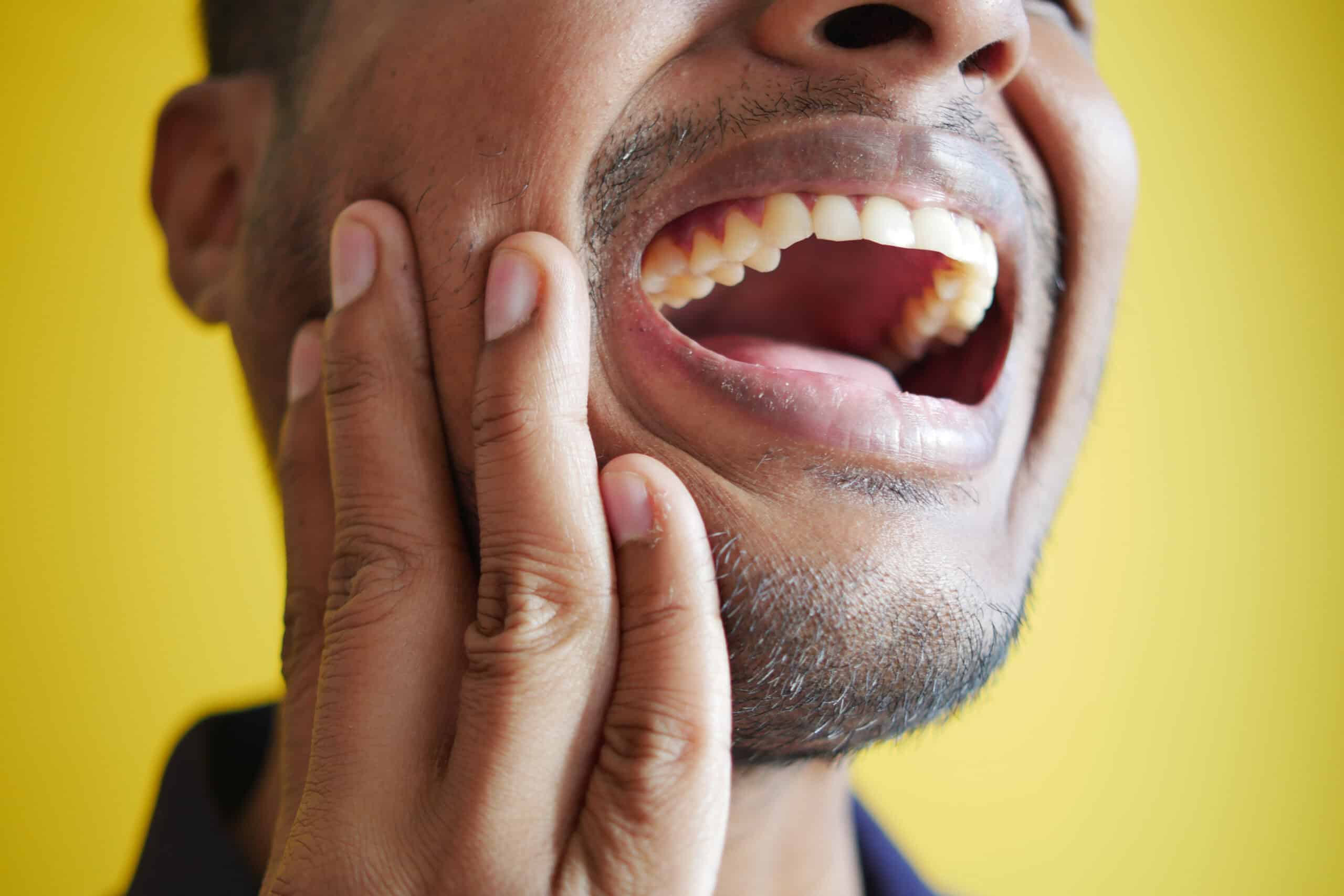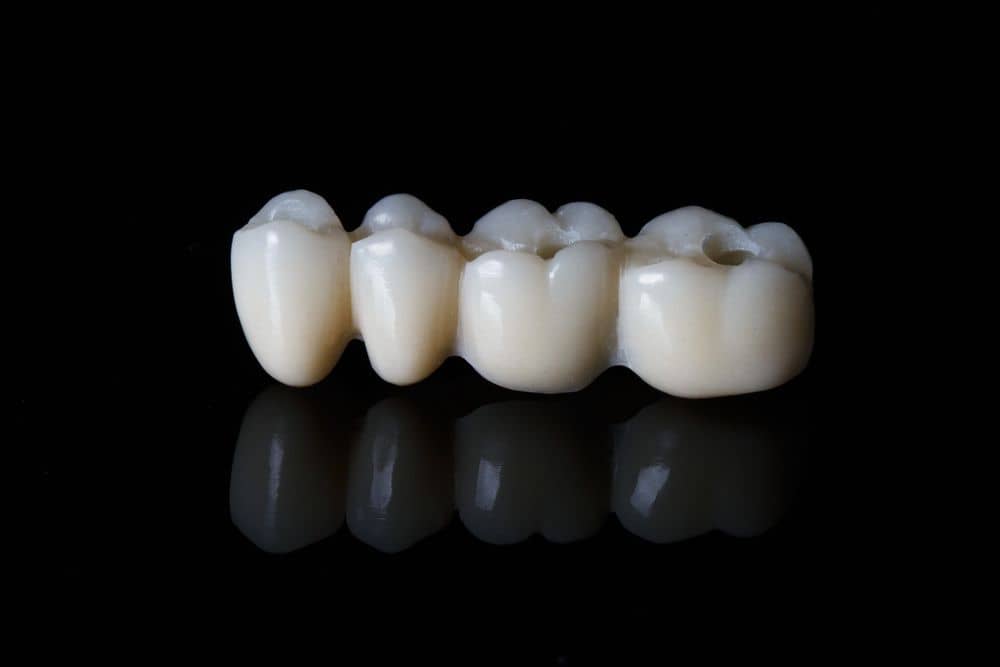A dental bridge, when perfectly crafted and fitted, can seamlessly restore the harmony of your smile, enabling you to chew, speak, and laugh with confidence. However, the line between comfort and discomfort, between a seamless fit and an ill-fitting dental prosthetic, can be as thin as a strand of dental floss. An ill-fitting dental bridge is not just a minor inconvenience; it’s a harbinger of potential oral health complications that can affect your daily life and well-being. Recognizing the symptoms of an ill-fitting dental bridge is crucial, as early detection can prevent a cascade of dental issues, from minor irritations to severe oral health problems.
Understanding the symptoms of an ill-fitting dental bridge is the first step towards addressing the problem, ensuring your dental health remains on a solid foundation. Whether you’re currently experiencing discomfort with your dental bridge or you’re looking to stay informed about your dental health, this article is your guide to recognizing when it’s time to seek professional advice and action.
What is a Dental Bridge?
A dental bridge is a fixed restoration that is customised to bridge the gap created by one or more missing teeth in your mouth. Natural teeth over which crown are placed are termed as abutment teeth and the false tooth or replaced teeth are termed as pontic.
As it is a fixed or permanent restoration, it usually lasts for a number of years but there are chances that it becomes loose or displaced before due. You should know what the symptoms of ill-fitting dental bridge are, how to manage it and when to approach your dentist for a loose bridge.
Try Our Dental Calculators
10 Symptoms of ill-fitting dental bridge
An ill-fitting dental bridge can cause various oral health problems. Some Common symptoms include:
1. Discomfort or Pain when chewing
You might experience pain when chewing because an ill-fitting bridge causes uneven pressure on your teeth and gums. This can lead to localized pain during eating, making meals uncomfortable and sometimes unbearable.

2. Soreness or irritation in the gums around the bridge
You may notice soreness or irritation in your gums if the bridge rubs against them. This constant friction can cause inflammation, making your gums tender and sensitive to touch.
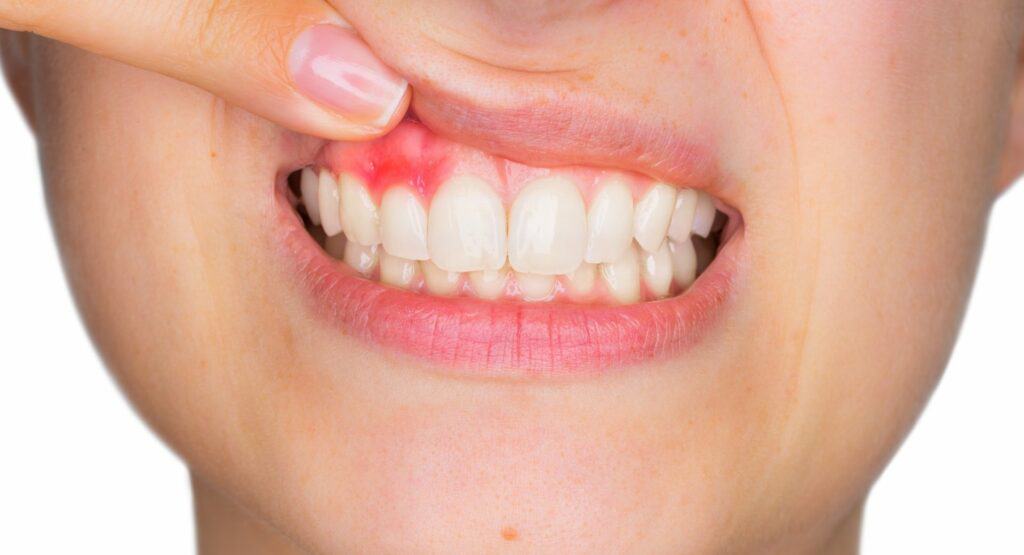
3. Difficulty speaking clearly
A misaligned bridge can interfere with your speech, causing slurring or lisping. Your tongue may struggle to find its usual positions against your teeth, leading to pronunciation difficulties and affecting your ability to communicate clearly.

4. Food particles getting trapped under the bridge
Food can get stuck under a poorly fitting bridge, leading to discomfort and potential decay. This trapped food can harbor bacteria, increasing the risk of gum disease and bad breath.
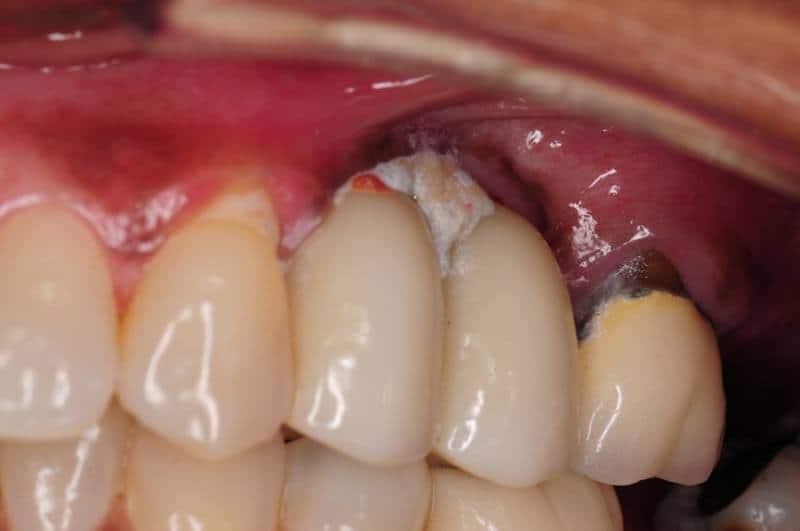
5. Loose or shifting bridge
Your bridge may feel unstable or shift when you talk or eat, indicating it isn’t properly anchored. This instability can be distracting and may cause concern about the bridge’s durability.

6. Increased sensitivity in surrounding teeth
You might feel increased sensitivity in the teeth adjacent to your bridge. This can manifest as sharp pain when exposed to hot, cold, or pressure, resulting from uneven force distribution or exposed sensitive areas.

7. Gum inflammation or redness
Your gums may become inflamed or red due to irritation from the bridge. This inflammation can lead to bleeding, tenderness, and increased risk of gum disease if left unaddressed.

8. Bad taste or persistent bad breath
A poorly fitting bridge can lead to plaque buildup and food entrapment, causing a persistent bad taste or bad breath. This is due to bacterial growth in the trapped food particles.

9. Jaw pain or discomfort
You could experience jaw pain or discomfort from a misaligned bridge affecting your bite. This can strain your jaw muscles and joints, potentially leading to headaches or more severe jaw issues.

10. Visible gaps between the bridge and gums
Visible gaps between your bridge and gums are a clear sign of poor fit. These gaps can trap food and bacteria, leading to further dental problems and indicating the need for bridge adjustment or replacement.
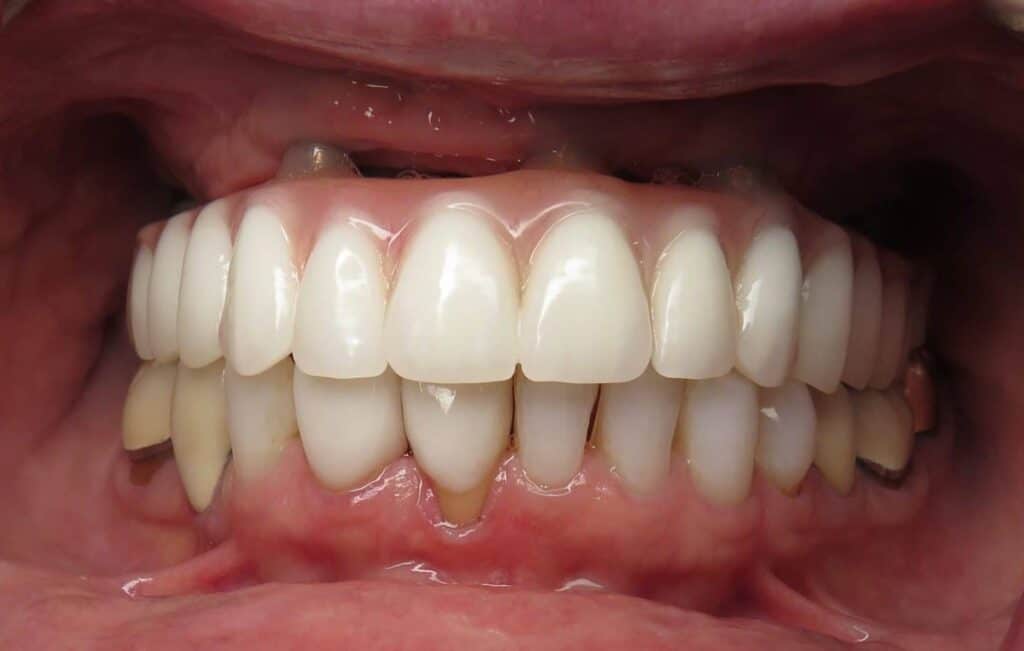
Causes of an ill-fitting dental bridge
An ill-fitting dental bridge can cause various oral health issues such as discomfort, eating difficulties, and heightened risks of decay and gum disease. Knowing the causes helps in prevention and correction. Here are the main causes:
Improper initial fitting
If your bridge wasn’t fitted correctly initially, it might not align properly with your teeth and gums. This can cause discomfort and instability, leading to an ill-fitting bridge that doesn’t function as intended.
Changes in gum tissue
Over time, your gum tissue can change shape due to factors like aging or gum disease. These changes can cause your bridge to become misaligned or loose, affecting its fit and stability.
Shifting of natural teeth
If your natural teeth shift, the bridge may no longer fit correctly. Teeth can move due to various reasons, such as tooth loss, periodontal disease, or natural changes over time.
Wear and tear over time
Your bridge may wear down over time due to regular use. This wear and tear can lead to changes in fit, making the bridge less effective and comfortable.
Poor dental work quality
If the dental work was of poor quality, the bridge might not fit well from the start. Inadequate craftsmanship or materials can result in a bridge that doesn’t align properly with your teeth and gums.
Inadequate impressions or molds
If the impressions or molds taken for your bridge were inaccurate, the resulting bridge might not fit correctly. Accurate impressions are crucial for a well-fitting bridge.
Bone resorption in the jaw
Loss of bone in your jaw, known as bone resorption, can alter the fit of your bridge. This condition often occurs after tooth loss and can cause the bridge to become loose or misaligned.
Incorrect bite alignment
If your bite isn’t aligned correctly, it can affect how your bridge fits. An incorrect bite can cause uneven pressure on the bridge, leading to discomfort and poor fit.
Use of substandard materials
If substandard materials were used to create your bridge, it might not fit well or last long. High-quality materials are essential for a durable and properly fitting bridge.
Lack of follow-up dental care
Without regular follow-up care, issues with your bridge might go unnoticed. Regular dental visits are essential to ensure your bridge remains well-fitted and to address any problems early.
Treatment for an ill-fitting dental bridge
If you feel any of above symptoms of ill-fitting dental bridge, you should immediately consult your dentist to prevent further damage to your gums and teeth. The treatment is decided according to its etiology whether it can be adjusted in the same bridge or new prosthesis to be made. This can be decided by a dental professional by properly diagnosing the cause. the options for treatment are-
- Recementation – Recementation is often the first line of treatment if the bridge itself is in good condition but has become loose or detached. This process involves carefully removing the bridge, cleaning the underlying teeth and the bridge itself to remove old cement, and then recementing the bridge back into place. Recementation can effectively restore the function and fit of the dental bridge if there has been no significant change in the structure of the teeth or gums.
- Remake the dental bridge – In cases where the bridge is damaged, significantly worn, or if the fit cannot be corrected through recementation due to changes in the mouth or errors in the original fabrication, remaking the bridge may be necessary. This process involves taking new impressions of the teeth to create a new bridge that accurately fits the current shape and arrangement of the teeth and gums. A remake is also considered if aesthetic issues with the original bridge cannot be corrected through minor adjustments.
- Dental implants – For some patients, replacing an ill-fitting dental bridge with dental implants may be the best long-term solution. Dental implants provide a stable and durable foundation for replacement teeth by anchoring them directly into the jawbone. This option is particularly valuable in cases where the natural teeth surrounding the gap are not healthy enough to support a new bridge or if there has been significant bone loss. Dental implants can replace a single tooth, serve as anchors for a bridge, or support a full set of dentures, making them a versatile and often preferable option for many patients.
Prevention from ill-fitting dental bridge
Prevention is always better than cure. It is true in this case also, to take some precautions immediately after the start of your procedure for dental bridge to prevent dental bridge failure. Some tips and tricks to prevent ill fitting dental bridge from our experienced Prosthodontist Dr. Kirti Parashar are:
- Maintain proper oral hygiene – Patient should properly maintain the adequate oral hygiene. It can be achieved using mechanical methods like brushing, flossing, etc. and chemical methods using mouthwashes, etc. You can ask your dentist for proper demonstration of brushing and dental flossing.
- Daily Cleaning: Use a soft-bristled toothbrush and fluoride toothpaste to clean your teeth and bridge thoroughly at least twice a day. Pay special attention to cleaning under and around the bridge to remove food particles and plaque.
- Flossing: Use flossers designed for bridges or a water flosser to clean beneath the pontic (the false tooth) and along the gum line where bacteria can accumulate.
- Antiseptic Mouthwash: Rinse with an antiseptic mouthwash to reduce bacteria in your mouth, which can lead to decay and gum disease affecting the teeth anchoring your bridge.
- Regular check ups – Schedule regular dental check-ups and cleanings, typically every six months, though your dentist may recommend a different frequency based on your oral health status. These visits allow for early detection and intervention of potential issues that could affect your bridge’s fit.
- Prevent sudden forces – Sudden impact forces like biting on nut or any hard and sticky food like caramel should be avoided in the dental bridge area.
- Protective Gear: Use a mouthguard during sports or if you grind your teeth at night (bruxism) to protect your bridge and natural teeth from unexpected or excessive forces.
Frequently Asked Questions
Q: How long does it take to adjust to a new dental bridge?
A: Adjusting to a new dental bridge typically takes a few weeks. During this period, patients may experience sensitivity and need to adapt to the feel of the bridge in their mouth.
Q: Can an ill-fitting dental bridge be adjusted or does it always need to be replaced?
A: In some cases, an ill-fitting dental bridge can be adjusted. However, if the fit issue is significant or if the bridge is damaged, replacement might be necessary.
Q: What are the long-term effects of wearing an ill-fitting dental bridge?
A: Long-term effects of wearing an ill-fitting dental bridge include increased risk of tooth decay, gum disease, discomfort, and damage to adjacent teeth.
Q: How often should a dental bridge be checked by a dentist?
A: A dental bridge should be checked by a dentist at regular dental check-ups, at least once every six months, to ensure it remains in good condition and fits well.
Q: What steps can I take at home if my dental bridge feels loose before I can see a dentist?
A: If your dental bridge feels loose, avoid chewing on the side of the loose bridge and maintain oral hygiene. Contact your dentist as soon as possible for advice and to schedule an appointment for assessment and repair.
